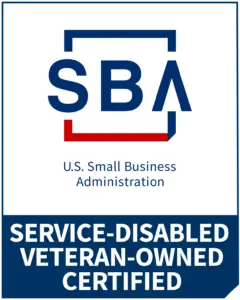Understanding Housing Authorities in the U.S.: Number, Types, and Challenges
Housing authorities are pivotal in managing and providing public housing in the U.S. Their role impacts millions of individuals and families by ensuring access to affordable living options. Understanding the number and distribution of these authorities is crucial for grasping their influence and operational scope. This article will cover:
Thank you for reading this post, don't forget to subscribe!- What housing authorities are and their relationship with HUD and local governments.
- The current number of housing authorities in the U.S. and their distribution across states.
- Challenges and future trends affecting these authorities.
1. What Are Housing Authorities?
Housing authorities are public organizations that manage and develop affordable housing for low-income residents, including families, seniors, and individuals with disabilities. They operate at the local, regional, and state levels, working closely with the U.S. Department of Housing and Urban Development (HUD) to ensure that housing is safe, decent, and affordable.
These authorities are typically established by local governments, but they function independently, governed by a board of commissioners. Their responsibilities include:
- Managing Public Housing: They oversee the operation and maintenance of public housing units, ensuring compliance with federal regulations and local standards.
- Administering Housing Choice Vouchers: Commonly known as Section 8, this program allows eligible families to rent privately-owned housing by providing financial assistance.
- Developing New Housing Projects: May also engage in constructing or renovating housing projects to meet the growing demand for affordable housing.
- Role and Definition: Housing authorities ensure affordable availability and effective management of public resources.
- Relationship with HUD: They work under federal guidelines from the Department of Housing and Urban Development (HUD) and coordinate with local governments to address community needs.
- Local Government Collaboration: Authorities tailor their services to meet specific regional needs and adhere to both federal and local regulations.
Have Questions About Any of Our Services?
Contact Us:- Wetumpka, Alabama
Phone: (334) 472-0686, Support: (334) 472-0686 Ext 5 Email: [email protected]
2. The Number of Housing Authorities in the US
There are about 3,300 housing authorities in the United States, distributed across various states with differing concentrations. Key insights include:
- Overall Statistics: The number of housing authorities reflects the scope of public housing management across the country.
- Distribution Across States: Larger states have more authorities due to higher population densities and urban requirements, while smaller or rural areas may have fewer or consolidated entities.
- Regional Variations: Differences in the number of authorities highlight regional approaches to public housing and resource allocation, influencing how services are delivered.
3. Types of Housing Authorities
Vary in type and function, each serving distinct purposes. Key types include:
- State Authorities: Oversee housing programs at the state level, often managing larger geographic areas.
- Regional Authorities: Serve multiple municipalities within a region, facilitating coordination among local entities.
- Local Authorities: Focus on specific cities or towns, directly managing public and rental assistance programs within their jurisdictions.
4. Challenges Faced by Housing Authorities
Housing authorities encounter several challenges that impact their effectiveness. These challenges include:
- Funding Issues: Limited budgets and fluctuating financial support can hinder the ability to maintain and expand housing programs.
- Maintenance and Management: Keeping public housing units in good condition and addressing tenant needs requires significant resources and effort.
- Policy Changes: Shifts in federal or state policies can affect program implementation and necessitate adjustments in operations.
5. The Future of Housing Authorities
Looking ahead, housing authorities face evolving trends and potential changes:
- Policy and Funding Changes: Future reforms may alter funding structures and operational guidelines, impacting how authorities function.
- Innovative Solutions: Emerging trends in housing and technology could influence how public housing is managed and delivered.
- Predictions for Growth: Increased demand for affordable and may drive the creation of new authorities or expansion of existing ones.
6. Designing a Housing Authority Website
Kmarks Web & Computer Solutions Providing a well-designed website is crucial for housing authorities to effectively communicate with the public and manage services. Key design elements include:
- User-Friendly Interface: Ensure the website is easy to navigate, with clear menus and straightforward access to information about available programs, application processes, and contact details.
- Accessibility Features: Incorporate accessibility options to cater to users with disabilities, such as screen reader compatibility, adjustable text sizes, and high-contrast color schemes.
- Resource Integration: Include interactive tools like application forms, eligibility checkers, and maintenance request systems to streamline user interactions and provide essential resources efficiently.
7. Conclusion
How many housing authorities in the us. And are crucial in providing affordable housing and supporting community well-being across the U.S. Their numbers and roles reflect the diverse approaches to managing public housing. As challenges and trends evolve, continued attention to these authorities’ effectiveness and adaptability will be essential. How can we further support and meet growing needs and improve housing access?.
Have Questions About Any of Our Services?
Contact Us:- Wetumpka, Alabama
Phone: (334) 472-0686, Support: (334) 472-0686 Ext 5
Email: [email protected]













